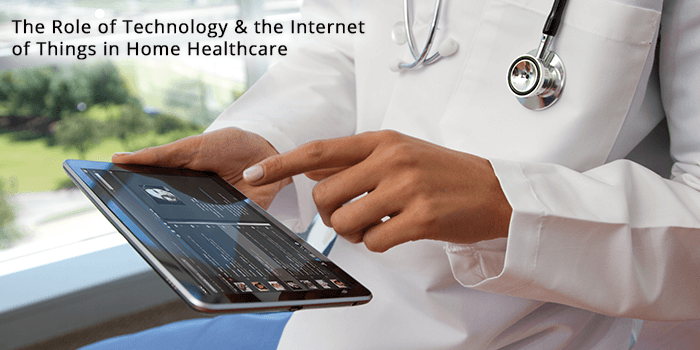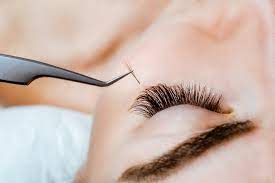“How the Internet of Things is advancing Home Health Care”, dated July 21st 2016, Tod Henderson (VP Marketiing and Business Development at Losant) quotes Dr. David Rhew, Samsung Chief Medical Officer:Monitoring of seniors’ health in the home setting can enable the early detection of problems, promote proactive interventions by healthcare providers and minimize hospital and long term costs.”
The primary aim of home health care is to enable patients to maintain their independence in their own homes, reducing emergency care and hospitalizations, improving their quality of life and perceived patient satisfaction, while at the same time reducing the total cost of health care. Technology can, and does already, play a vital role in delivering better standards of healthcare at home.
Holistically speaking, home healthcare serves people with complicated and multiple chronic conditions including heart failure, chronic obstructive pulmonary disease (COPD) , diabetes – to name a few. Technology can improve the management and care of this high-risk population by providing:
- Daily monitoring – between in-person visits>
- Timely intervention depending on the patient’s condition
- Providing a triage of clinical needs
- Reinforcing treatment and discharge plans
The interaction and collaboration benefits, between care givers and medical interventionists includes:
- The option of targeting visits and support to patients when most needed
- Customising self-management training and health education for both patients and caregivers
These patient management improvements through technology, does save clinicians’ time by improving coordination and collaboration between the various parties involved in delivering enhanced home healthcare. As far as hospitals are concerned, by enhancing interaction and collaboration, technology can:
- Reinforce the discharge plan
- Allow hospitals to recognize key indicators for readmission
- Contribute to the stabilization of patients after hospitalization
- Generally support care transitions
- Encourage improved communication and relationships with discharge planners
How technology has revolutionized home healthcare services
The Internet of Things (IoT) technology is changing how in-home care is provided by offering significant improvements for:
- The individuals needing care
- The families arranging for the care
- The companies providing care
IoT enables connected devices and sensors, and the data they provide offer solutions that allow individuals to maintain their autonomous lives, at a much smaller risk. For instance, a wearable device can monitor an individual’s respiration, heart rate, and blood pressure. If a vital sign drifts out of the “normal” territory, the device alerts a loved one, neighbour, or health care provider who can respond.
New technologies shaping the future of home healthcare:
Mobile technology is revolutionizing the healthcare industry.Wired magazine, staff writer Issie Lapowsky says the future of home healthcare depends on remote doctor visits. The patients’ ability to connect with providers via smartphones and tablets for diagnoses, advice, and even prescriptions, makes home healthcare a highly viable alternative to hospitalizations. Lapowsky goes on to say that telemedicine and IoT enables doctors:
- To keep better track of patients via remote monitoring
- To provide healthcare solutions for people who live in rural and remote areas
Peace of mind via technology
For many patents, their families are specifically concerned with a perceived lack of safety and security – the fear that something could happen to their family member when no one is around to help. To combat this eventuality, a caregiver has to be physically present in the home the patient resides in. 24/7 care is expensive. This is changing thanks to innovative technology. Affordable home security/monitoring systems and IoT platforms are allowing home care companies to implement solutions allowing remote caregivers to be notified in real time of any incidents or changes in the patient’s condition. This supports the individuals’ and families’ desire for privacy and independence while offering security and peace of mind.
What are the technological advancements and innovations in this sector?
One of the examples that stand-out is how Cincinnati-based home care company.Total Homecare Solutions (THS) is using IoT technology to balance the independence customers want, with the security they need, at a cost they can afford. Using an off-the-shelf wireless home security system with a simple micro-processer, sensors placed in doors, windows, and mattresses stream data to Losant’s IoT platform. Monitoring remotely reduces the cost of care and allows for greater privacy and autonomy for individuals.
At present, there are many smart solutions for home health care. The good news is that the declining cost of microprocessors, the ever growing numbers of connected devices, and expanding volumes of data streaming from them, are creating opportunities for improving the quality of care and reducing costs.
Advances in computing and information technology are also impacting home health care. Though, information technology has been used a for a long time to bridge geographic distances, giving people access to the finest brains in medicine and science without having to travel. Eventually, computing and IoT will actually be used to enhance the quality of home healthcare services.
Physiological monitoring
Active monitoring devices can capture vital signs, weight and symptoms and report them to a remote provider or a home health care agency.
Passive monitoring devices include bed sensors that capture restlessness, sleep interruptions or pulse and respiration while the patient is asleep.
Monitoring patient function and, detecting emergencies
Devices that people wear that can detect falls and other accidents. Wearable personal emergency response systems that allow a person to press a button and summon help.
Safety
Active alarm systems that detect fires or floods. Passive systems that use motion and heat sensors to differentiate between the heat that occurs while cooking and heat that builds up when there’s a fire.
Security
Camera systems that can remotely monitor residential spaces and visitors. Sensors that can capture levels and unusual patterns of activity.From a patient’s perspective, telehealth can just be:
- As simple as making telephone calls
- Being part of an online support group
- Getting health information and self-management tools online
- Staying in touch with healthcare providers
From the perspective of the provider, telehealth can involve:
- The use of electronic health records
- Remote monitoring of vital signs and symptoms
- Having consultations and patient visits by video conferencing
Technology can be invaluable to all the caregivers involved – physicians, nurses, therapists, social workers, family members, all of whom are providing some aspect of care—by creating links that ease communication, coordination, and improved collaboration.
Wendy J. Nilsen, Program Director,National Science Foundation,has said that, “it will be necessary to transform thinking about home healthcare from an approach that it is ‘health care at home’ to one in which it is ‘smart homes where people can be healthy’. Technology in the home needs to be seen as an alternative form of care,” she said and not just an add-on to current systems.
Nilsen gave the example of a glucose monitor, saying that glucose monitors often disregard the fact that people who have diabetes can’s read the monitors because they have tiny buttons and even smaller type.“If you have problems with your vision from long-term diabetes, you can’t see eight-point type,”she said. The new technologies developed must be useful to the patient, the caregiver, and the care team by giving them actionable data useful to them, Nilsen concluded.
Some numbers on home healthcare in India
According to a recent (4.1.2018) newscast on CNBC Awaaz, the future of home healthcare in India is bright and promising. The experts from the medical fraternity have given figures that clearly support the affordability and cost-effectiveness of home healthcare.
Comparative Costs:
ICU in hospital40,000 At home5,000
Physio in hospital 1,000 At home 600
Chemo in hospital 80,000 At home 15,000
The same experts have also estimated the market size of Indian home healthcare at Rs.2000 crore. The Indian market had grown by 15% in 2015. However, in 2017, the growth had reached 8% per annum. Estimated growth in 2025:15 – 20%. The Association of Healthcare Professionals support home healthcare as it’s more cost-effective, less expensive and better for customers. When delivered by specially trained healthcare professionals, the per day costs should be around Rs.3000..
[“source=michiganross”]











